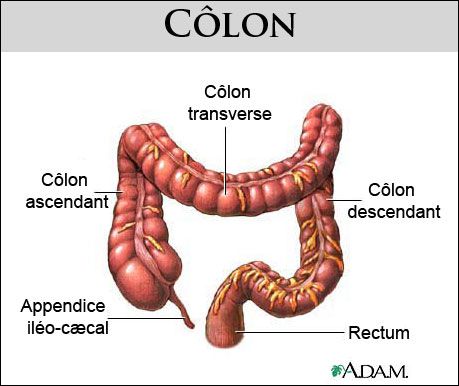-
 Super-Kamiokande
Super-Kamiokande
-
 Treponema pallidum
Treponema pallidum
-
 Active galaxy nucleus
Active galaxy nucleus
-
 Beriberi
Beriberi
-
 Functional isomers
Functional isomers
-
 Varicose veins
Varicose veins
-
 Beak
Beak
-
 Remitting fever
Remitting fever
-
 Rotterdam Convention
Rotterdam Convention
-
 Microbiome
Microbiome
-
 Plasma substitutes
Plasma substitutes
-
 Homeopathy
Homeopathy
-
 Die
Die
-
 Sensor
Sensor
-
 Tholin
Tholin
-
 MTI
MTI
-
 Aposematism
Aposematism
-
 Laparotomy
Laparotomy
-
 Conduction block
Conduction block
-
 CT arthrogram
CT arthrogram
-
 Cellular dolomite
Cellular dolomite
-
 Antibiotic for acne
Antibiotic for acne
-
 Subspecies
Subspecies
-
 DSP
DSP
-
 Homeplug
Homeplug
-
 AAC
AAC
-
 Rectrice
Rectrice
-
 Histology
Histology
-
 Colposcopy
Colposcopy
-
 Colitis
Colitis
Colon
The colon is part of the digestive system.
Function of the colon
The colon is also called the large bowel and follows the small bowel forming the last part of the digestive system. It has several parts:
- the caecum (from which the appendix begins);
- the ascending colon (right colon);
- the transverse colon;
- the descending colon (left colon);
- the sigmoid colon;
- and the rectum.
Its main role is to remove waste, absorb water, maintain water balance and absorb certain vitamins. The chyle which comes from the small intestine has already had almost all (90%) of its nutrients absorbed by the digestive system. Chyle mixes with mucus and intestinal bacteria in the colon to form faecal matter. Bacteria which can digest fibres form new molecules that the colon can then absorb.
Its pH is between 4.5 and 7.5.
Structure of the colon
The colon is 1 to 1.5 meters long and 4 to 8 centimetres in diameter (the rectum and caecum respectively). It is composed of several layers, from the inside to the outside consisting of:
- a mucosa which contains no valves or valvules;
- a highly vascularised innervated sub-mucosa;
- circular (internal) and longitudinal (external);
- smooth muscles and a serous lining (peritoneum).
 The colon or large bowel is the last part of the gastrointestinal tract. © www.health.allrefer.com
The colon or large bowel is the last part of the gastrointestinal tract. © www.health.allrefer.com
Latest
Fill out my online form.



